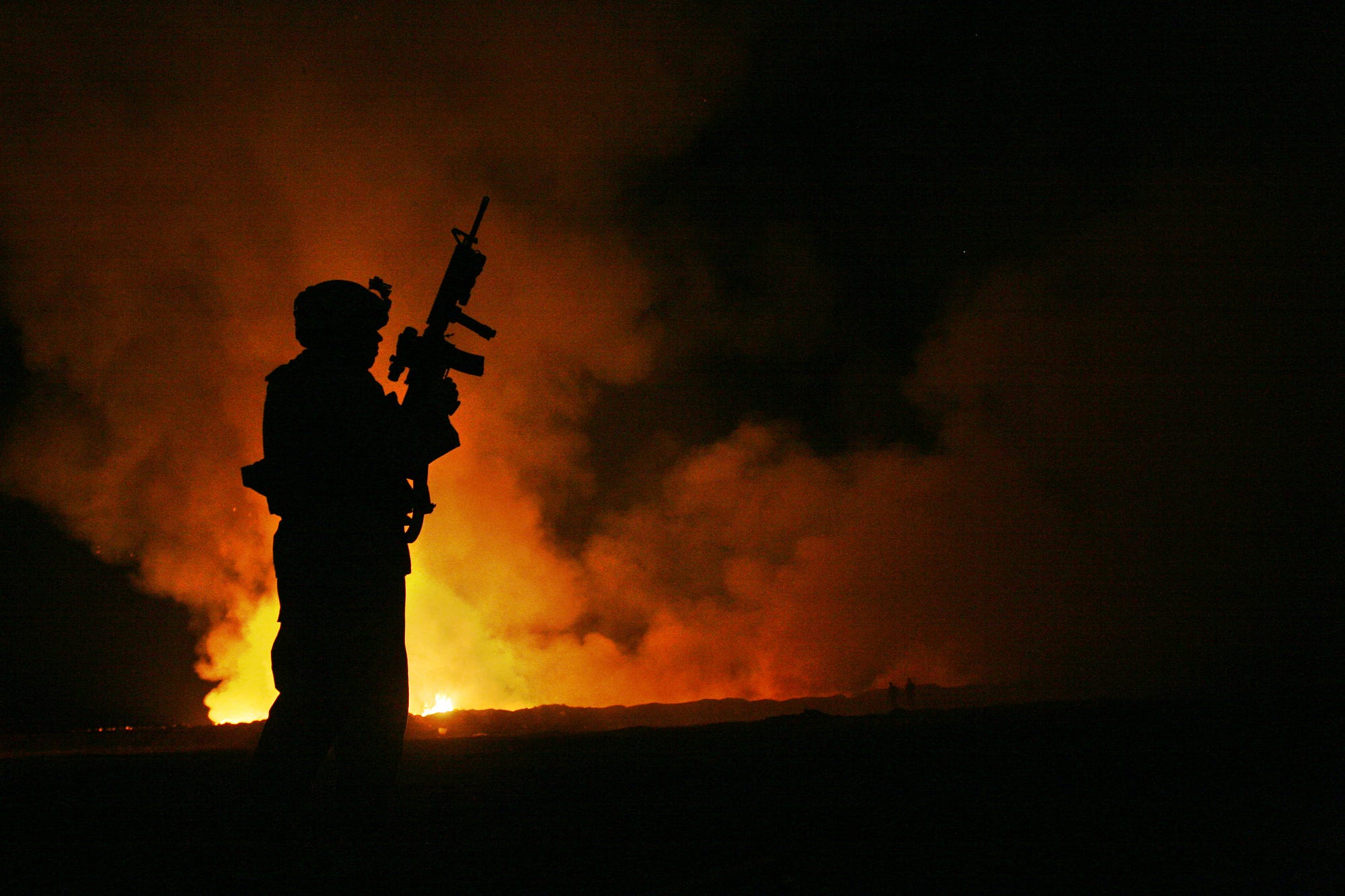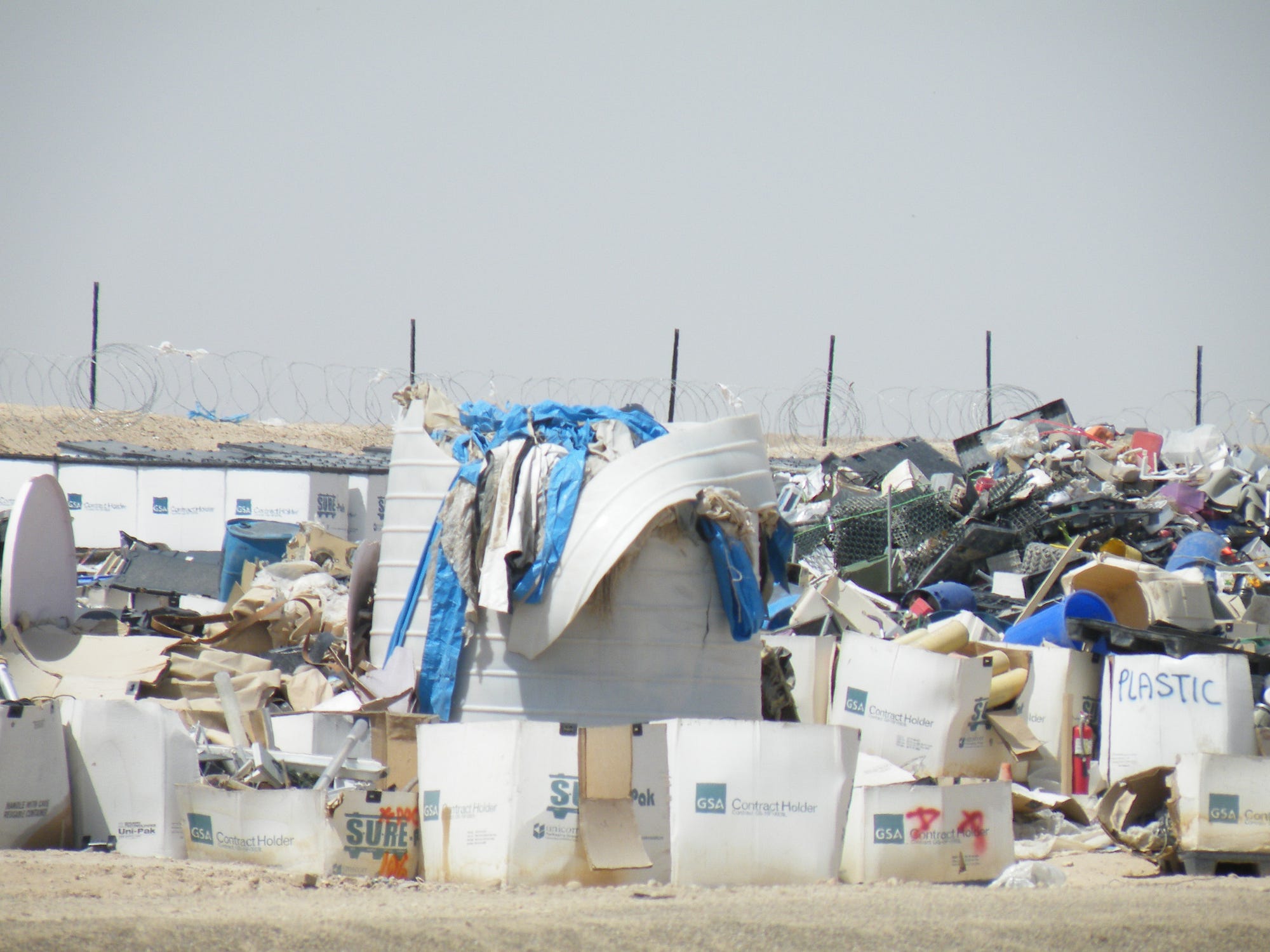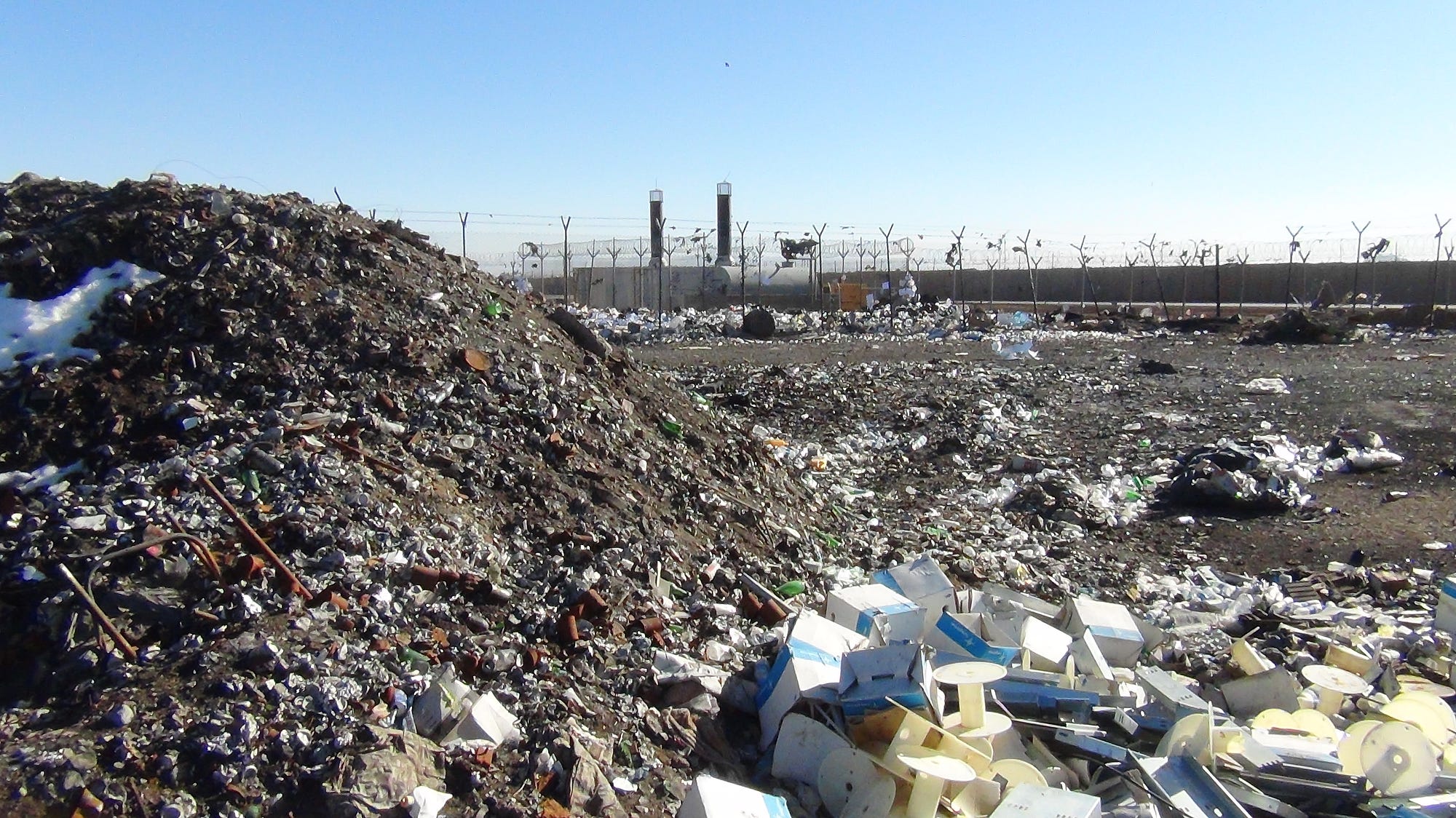by MATTHEW GAULT
Taxpayers wasted millions to replace open-air burning, but the damage was done
Jason Dawson joined the Marines in 2003 and went to Iraq in 2006. He deployed to Al Asad air base in Anbar province where he was part of a crash, fire and rescue team.
When his tour finished, he stayed and became a civilian contractor—a firefighter.
He liked the pay and the work, but he didn’t like the burn pits. Al Asad maintained a large, open-air ditch filled with burning garbage. It’s how the base disposed of all its waste.
“Some mornings I remember waking up … and I could smell the burn pits,” he says.
Dawson stayed in Al Asad for three years, and the whole time he dealt with toxic fumes. Since coming home, he’s developed several mysterious health problems doctors can’t seem to diagnose.
Dawson—who is a personal friend—is not alone. Thousands of returning soldiers and civilians reported various health problems after coming back from Iraq and Afghanistan. Many suspect prolonged exposure to the burn pits are the cause.
What didn’t help is that the military’s efforts to clean up the burn pits were half-hearted at best, and negligent at worst. That’s the conclusion of a new report from the Special Inspector General for Afghanistan Reconstruction.
In the report, the congressionally-mandated watchdog details taxpayer cashwasted trying to close the Pentagon’s burn pits.
But worse than the monetary waste is how SIGAR details the eight years the Defense Department ignored the problem.
In Afghanistan alone, the military spent close to $90 million to provide alternatives to open-air burning of waste. It didn’t go well.
Base commanders continued using burn pits, and contractors hired to install incinerators often botched the jobs. And despite SIGAR, Congress and others expressing concerns over the health of soldiers and contractors exposed to fumes, the Pentagon didn’t move to fix the problem until 2009.
By then, it was already too late. Many American soldiers—including Dawson—already spent years breathing in toxic chemicals.
 A Marine watching civilian firefighters control a burn pit at Camp Fallujah in 2007. Marine Corps photo
A Marine watching civilian firefighters control a burn pit at Camp Fallujah in 2007. Marine Corps photo
Burn pits are a short-term solution for a long-term problem. America went to war in Afghanistan and Iraq, established bases quickly and needed an easy way to get rid of waste. The Pentagon decided burning it was best.
As the conflicts dragged on, some in the media as well as members of Congress questioned the safety of burn pits. According to a Defense Department directive, any place where more than 100 American personnel gather for more than 90 days must find an alternative to burn pits.
Here’s the problem—that directive didn’t exist until 2009. Congress forced it on the military and even then, the military didn’t abide by the rule.
“Finding a less hazardous alternative method of waste disposal was not a high priority,” SIGAR reported.
As a Marine, Dawson was a part of crash, fire and rescue team—he trained as a firefighter and first responder. If a plane crashed or caught fire, he and his team would rush to the scene to render aid and put out the flames.
It involved a lot of training with controlled fires. And, according to Dawson, about once a month it involved uncontrolled fires. His team would train in Al Asad’s burn pit.
“The burn pit on Al Asad was close to the chow hall … maybe 200 or 300 yards,” he says. Training typically took place after lunch, so the team would sometimes do a drill in the pit because it was quick and easy.
“I don’t know what the fuck we’re burning,” he explains. “I know there is composite materials out here, I know there’s tungsten and aircraft parts.”
I ask if he ever saw batteries or tires. “All of that was out there,” he says. “There was a half an F-18 out there. People would throw trash on it and light it on fire.”
As a Marine, he raised objections to working in the pit. “Maybe we shouldn’t be breathing this in,” he recalls. But his superiors told him to man up, he said.
As a contractor, Dawson avoided the area as much as possible and always had a respirator close by, but it didn’t matter. The winds carried smoke from the pit across the entire base. It was unavoidable.
 Materials—including plastic—waiting to be burned at Camp Leatherneck in Afghanistan in 2013. SIGAR photo
Materials—including plastic—waiting to be burned at Camp Leatherneck in Afghanistan in 2013. SIGAR photo
“In April 2010, DOD reported to Congress that open-air burning is the safest, most effective, and most expedient manner of solid waste reduction during military operations until current research and development efforts could produce better alternatives,” the Inspector General’s report reads.
Which is strange considering that the military knew how dangerous the pits were well before America went to war. In 1978, the Pentagon issued guidelines stating to only use burn pits as a last resort.
In 2004, it began replacing some of the pits in Afghanistan, but it would be another nine years before the military issued a directive against the practice, and another five before its curious testimony before Congress.
The Pentagon decided incinerators were the best alternative, and spent millions to replace the burn pits in Afghanistan. But on numerous occasions, the contractors messed up installing the machines, or base commanders simply decided to continue using pits.
It was at times because of military necessity. One such site was at Forward Operating Base Salerno. It sits near the border with Pakistan and shuts off all its lights at night. The FOB’s commanders didn’t want to be sitting ducks for insurgents.
But the incinerators needed to operate 24 hours a day to keep up with waste production, which was impossible considering the light restrictions at night. Between that and the $1 million annual price tag for using the machine, the base commander decided to never turn it on.
The base continued to burn garbage in the open.
At Forward Operating Base Sharana, contractors did an awful job installing the machines. The incinerators’ loading area was too narrow to allow forklifts in to dump waste.
It would cost $1 million to fix the problem, so FOB Sharan’s commanders decided to not use the machines and continue burning garbage.
Dawson developed a persistent skin rash after coming home. “I was told by a dermatologist that it’s completely normal,” he says.
The doctor guessed it was something he picked up in Iraq. “I’ve used topical creams and Selsun Blue … but it always comes back.”
He wore a t-shirt during our conversation. Red splotches covered his neck, disappearing below the collar. More troubling than the rash is his chest pain and breathing problems.
“There’s a pain in my chest,” he explains. “Starting in my sternum. It’s just to the left of the heart. It’s a dull ache. Sometimes there are sharper, stabbing pains. A lot of the time, it’s related to breathing. It worsens with deeper breaths. When I exhale, I feel a shudder of pain. It comes and goes in waves.”
He’s seen a half-dozen doctors, and even called emergency services when the pain got so bad he felt like he might be having a heart attack. No one has been able to give him a diagnosis.
“It’s been years that I’ve been trying to figure out what’s wrong with me.”
I ask him if he thinks the burn pits caused his health problems.
“It’s something that’s been nagging me,” he says. “I was breathing in carcinogens. I don’t know what aluminum alloys burnt to a crisp would do to my lungs. I know it’s probably not good.”
 Shindand’s open-air burn pit sitting next to its unused incinerators in 2014. SIGAR photo
Shindand’s open-air burn pit sitting next to its unused incinerators in 2014. SIGAR photo
Dawson isn’t alone. Timothy Lowery spent three years on Al Asad as a plumber. He installed a lot of pipes near the base’s burning pile of garbage. When he came home, he developed Lou Gehrig’s disease.
Thousands of other veterans and civilian contractors came home withsimilar stories. They worked near burn pits, and now their health is failing.
“How much of [my health problems are] related to the burn pits?” Dawson asks. “I don’t know. Have I suspected it? I have.”
The personal stories from those exposed to the toxic fumes—combined with the recent SIGAR report on Afghanistan’s burn pits—paint a damning picture. One where the Pentagon knew for years about the health risks associated with open-air burning of garbage, but did nothing.
“Given the fact that DOD has been aware for many years of the significant health risks associated with open-air burn pits,” the Inspector General writes. “It is indefensible that U.S. military personnel, who are already at risk of serious injury and death when fighting the enemy, were put at further risk from the potentially harmful emissions from the use of open-air burn pits.”
“It’s my one true regret from going over there,” Dawson says. “Breathing in that shit from the burn pits.”
No comments:
Post a Comment